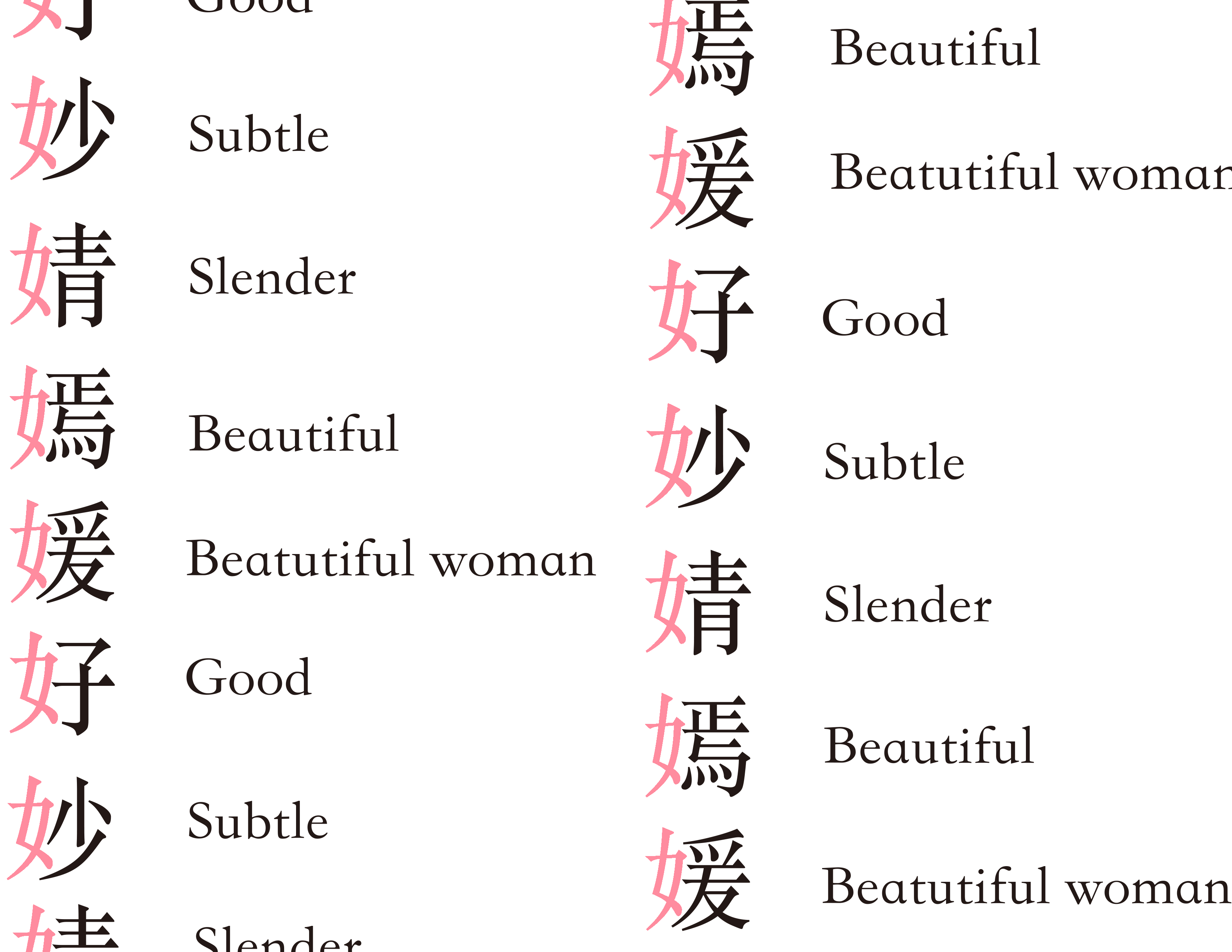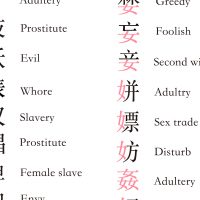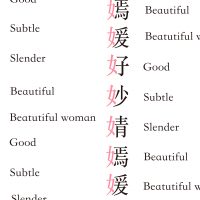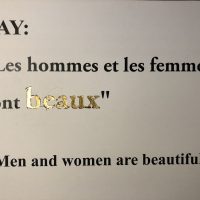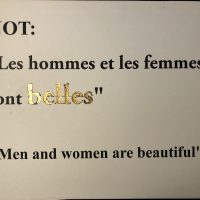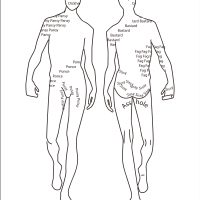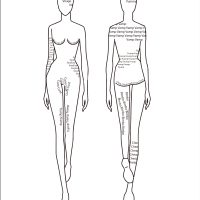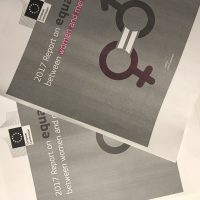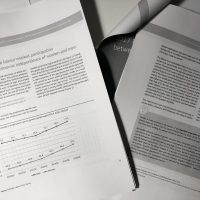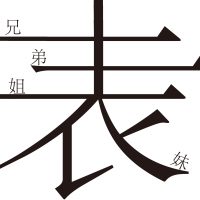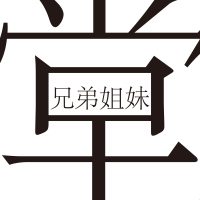In stead of choosing an object, form or image, I chose something related to language. When I was assigned with this project, the first thing related to my theme is french grammar. So I decided to dive in to linguistic sexism in different culture background.
- What conversation happened between each image in this diptych?
For this diptych, I focused on Chinese character. In Chinese culture, “女” is an important part of Chinese character, and the characters with this part have more negative meaning characters than positive meaning characters. I highlighted this part with pink and gave definition of each character.
- How was the medium selected successful at supporting the content of your object, form, or image? (if it was not as successful as others, why?)
So I printed this diptych and I think it shows my concept directly. People can see the layout of characters and the relationship between two. I want them to be flatten since it’s easier to see the composition of each character and find things in common and different in each image.
- How did the materiality (medium used) affect the content or meaning of the individual artworks?
I tried to pass an information, a message to the audience, my goal is simply to show a fact and inspire people or encourage people to think about this fact. If I change the medium to performance for instance, it would change my point of view or even bring more information. That’s might be another approach of this diptych but I have not think about it yet.
- What did you learn about your content through this medium exploration?
So I learned that in Chinese culture, especially in Chinese character, the structure of words have more than their literal meaning but something else, it reflects how ancestor thought about gender.
- How did the medium you used change the context of your object, form, or image?
I do not think printing changed the context a lot since language is printed and spread in paper form, I sort of continue this kind of way. But I only print a single A4 size, it would be different if I print them in other form like books, newspaper, etc.
- What websites / books / museums / galleries / other artists did you research during this process for ideas and inspiration?
I researched Gu Dexin (Art and China after 1989) since he worked with Chinese characters.
This is my original inspiration of linguistic sexism. For this diptych, I chose two sentences that demonstrate sexism in french grammar, the sentence which uses the masculine form of the adjective even though only the word “hommes” is masculine while “femmes” is feminine.
For this diptych, I shifted my focus into insulting words. In my previous seminar class, we discussed this issue before, there are more derogatory words for women than men. And even the words that intended to insult man are some disrespectful words that related women. I put certain words that related to body part into the figure.
In this diptych, I focused on something very minor, the order of “men and women” and “women and men”. People tend to use “men and women” more than “women and men”. So I want to know if people really care about such minor thing. Then I found the latest article about gender equality and highlighted the term “men and women” and “women and men”. To my surprise, people who wrote this article did pay attention to the order and even have more “women and men” than “men and women”. Then I kept looking article like that and realize that people use more “women and men” than “men and women”.
- What conversation happened between each image in this diptych?
So I printed out two exactly same report that just released. I highlighted “men and women” and “women and men” in two different colors.
- How was the medium selected successful at supporting the content of your object, form, or image? (if it was not as successful as others, why?)
So I printed out two “books”, two actual object so that people can interact with. I broke the form that I used to like my previous diptych. I did not indicate what’s inside the book, people have to find what and where I highlight the words and make connection between them by themselves.
- How did the materiality (medium used) affect the content or meaning of the individual artworks?
The meaning of this diptych might be more solid if I put them as a book, I did not change any content of the book, the only thing I did is to highlight a small part of them.
- What did you learn about your content through this medium exploration?
I sort of open a new field of creating artwork, which is creating something base on someone else’ work, it has not to be art work but found object. I found it very interesting because it offers me an opportunity to recreate, reform and develop a concept.
- How did the medium you used change the context of your object, form, or image?
The medium I used is also printing, but resulting as a book or report. I recover it original form that the report intended to be and recreate base on that form.
- What websites / books / museums / galleries / other artists did you research during this process for ideas and inspiration?
I tried to google linguistic sexism and from wikipedia, the gave out several examples including the sequence of “Men and women” and “Women and men”. Also, I got inspired from my friend’s previous work, which he highlighted some of words that he did not know from SAT article and develop his work base on that.
The last diptych, I worked on how to addressing your cousins. In Chinese culture, there are two different way to address your cousins, and that often related to rank. Cousins from father’s side are relatively closer than the mother’s side, and that reflect in how to address them in Chinese.
“表” means outsiders, and you use them to call the cousins that from your mother’s side.
“堂” means insiders, and you use them to call the cousins that from your father’s side.
(But you still use “表” to call your aunt’s children even though she is the sibling of your father since she married to other people.)
- How does this experiment shift your overall thesis question?
Since I was working on linguistic sexism, it brought me into a field that not most people would notice, especially in the society. Such minor thing does actually matters, people should have to give some attention into such things because it might cause bigger changes.
